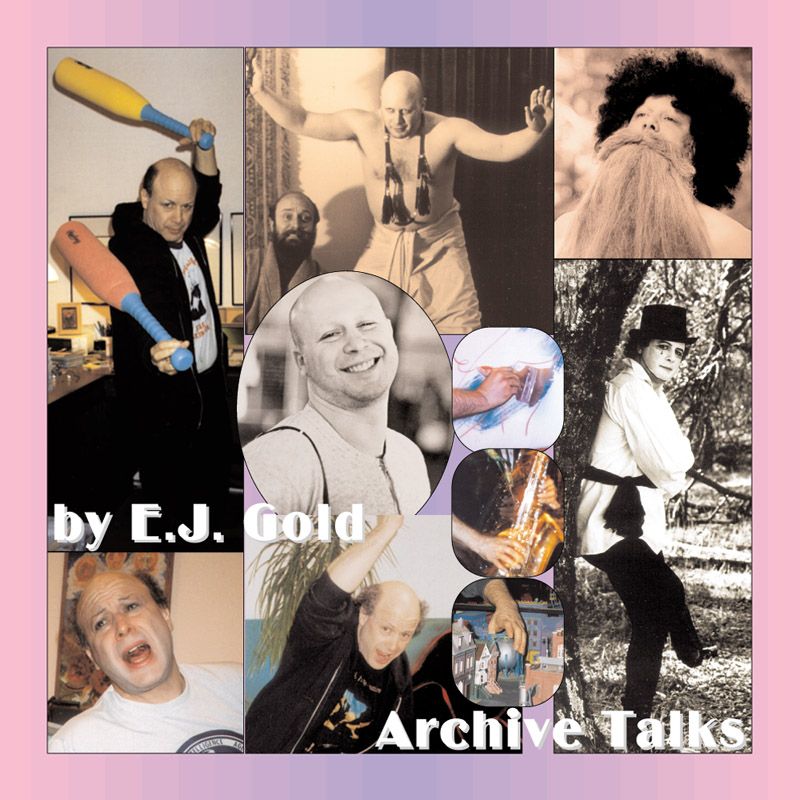

CDT291
Security / Insecurity
PWOS, Top52
Working with the formulation "Security is not the cure for insecurity," Mr. Gold examines issues of fundamental insecurities and presents an amazingly simple method for handling them enmasse. Lee Lozowick and some of his senior students contribute to this poignant discussion along with several members of the Core Group. Insecurity is dispassionately viewed here as a disease or an addiction. Consequently there is valuable information given on overcoming any addiction.
Synopsis
The talk revolves around the paradoxical nature of insecurity and security, asserting that security is not the cure for insecurity. It delves into human emotional tendencies, the motivations behind common behaviors, and societal systems built upon insecurity. The speaker argues that true resolution comes from abandoning the concept altogether rather than seeking to resolve it with its opposite. The discussion expands into the nature of addictions, discipline, and personal transformation, using analogies such as darkroom photography, personal anecdotes, and withdrawal from addictive behavior.
Summary
The speaker introduces a counterintuitive statement: "Security is not the cure for insecurity." They argue that insecurity is an emotional illness, independent of causation, and that seeking security only reinforces insecurity rather than eliminating it. Using a medical analogy, they compare insecurity to pneumonia, stating that identifying its cause does not necessarily lead to its cure.
The discussion touches on gendered perspectives of insecurity—men often regarding conquest and status, women tending toward relationships, though the speaker acknowledges this as a generalization. They emphasize how entire industries, from fashion to automobiles, are fueled by insecurity.
A suggested resolution is not the acquisition of security but the complete abandonment of both insecurity and security—akin to throwing away a two-sided coin rather than flipping it. The speaker draws parallels to quitting addictive substances, emphasizing the necessity of going "cold turkey" rather than attempting gradual change.
Several personal anecdotes illustrate these points, including learning darkroom techniques, fraternity initiation hardships, and a grave-related incident emphasizing the power of absolute rejection. The discussion also touches upon language manipulation as a way individuals rationalize holding onto desires and dependencies.
Ultimately, the talk proposes that transcending insecurity is about eliminating the attachment altogether, rather than managing it piecemeal. The session concludes with reflections on discipline, psychological resistance, and strategies for fully relinquishing unhelpful desires.
Keywords & Key Phrases
- Security is not the cure for insecurity
- Emotional illness
- Desire for security
- Transactional abandonment
- Darkroom analogy
- Cold turkey principle
- Addiction to validation
- Fear as a friend
- Throwing away the coin
- Non-desire field
- Rationalization trap
- The illusion of control
- The Catholic programming
- Manipulation through ego
- Psychological resistance
- Unsupported desire
- Letting go completely
- Denial as reinforcement
- Fear vs. panic
Graphic Prompt
"A surreal, abstract illustration of a golden coin hovering mid-air, its two faces embossed with the words 'Security' and 'Insecurity.' Below, a shadowy figure walks away, leaving it discarded on a dirt path under a vast, empty sky. The landscape is minimalistic, evoking a sense of detachment and quiet transformation. The color palette includes muted golds, deep blues, and soft grays, evoking introspection. The scene is framed in the style of metaphorical realism, with subtle symbolism representing emotional release."



